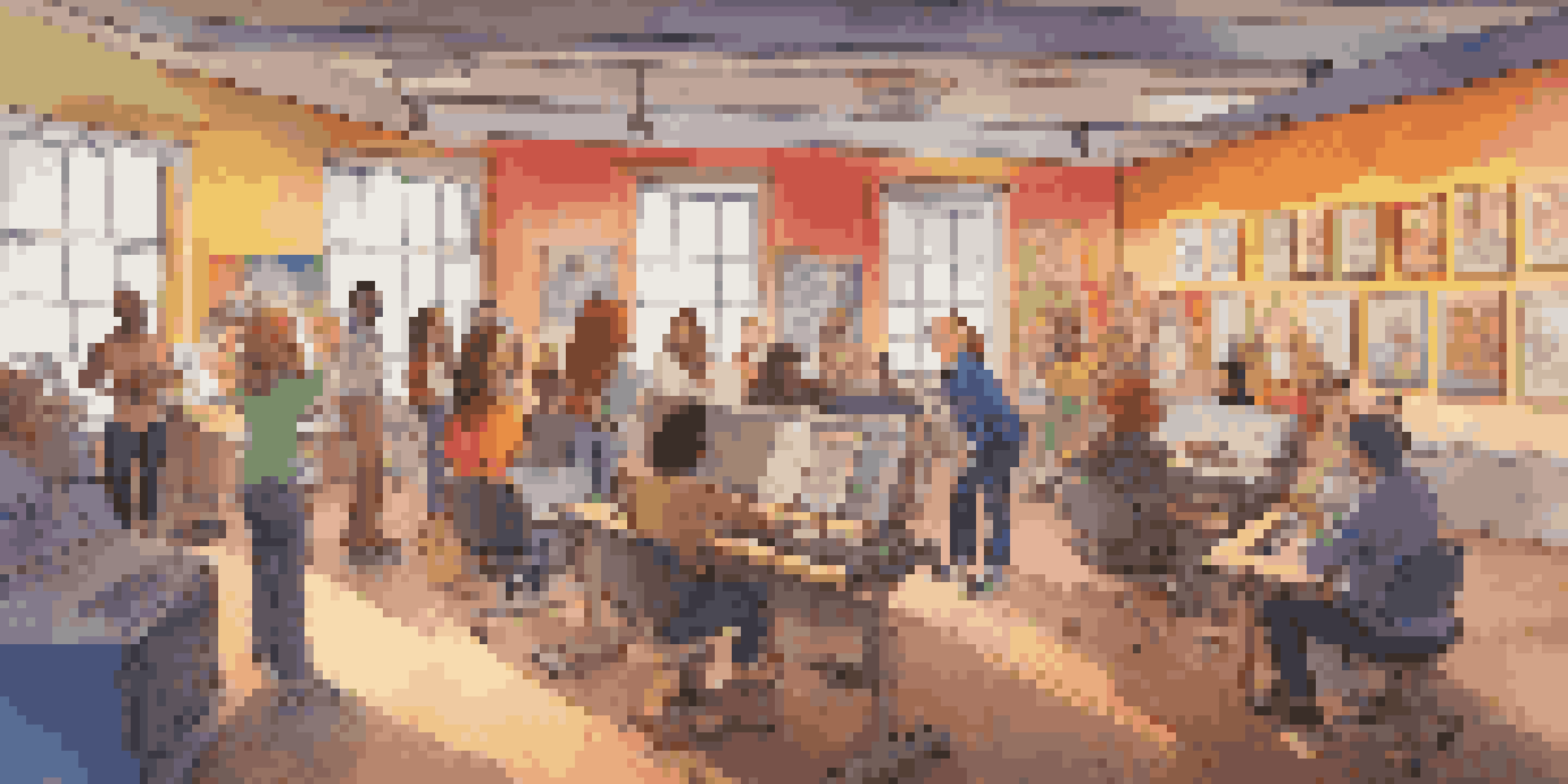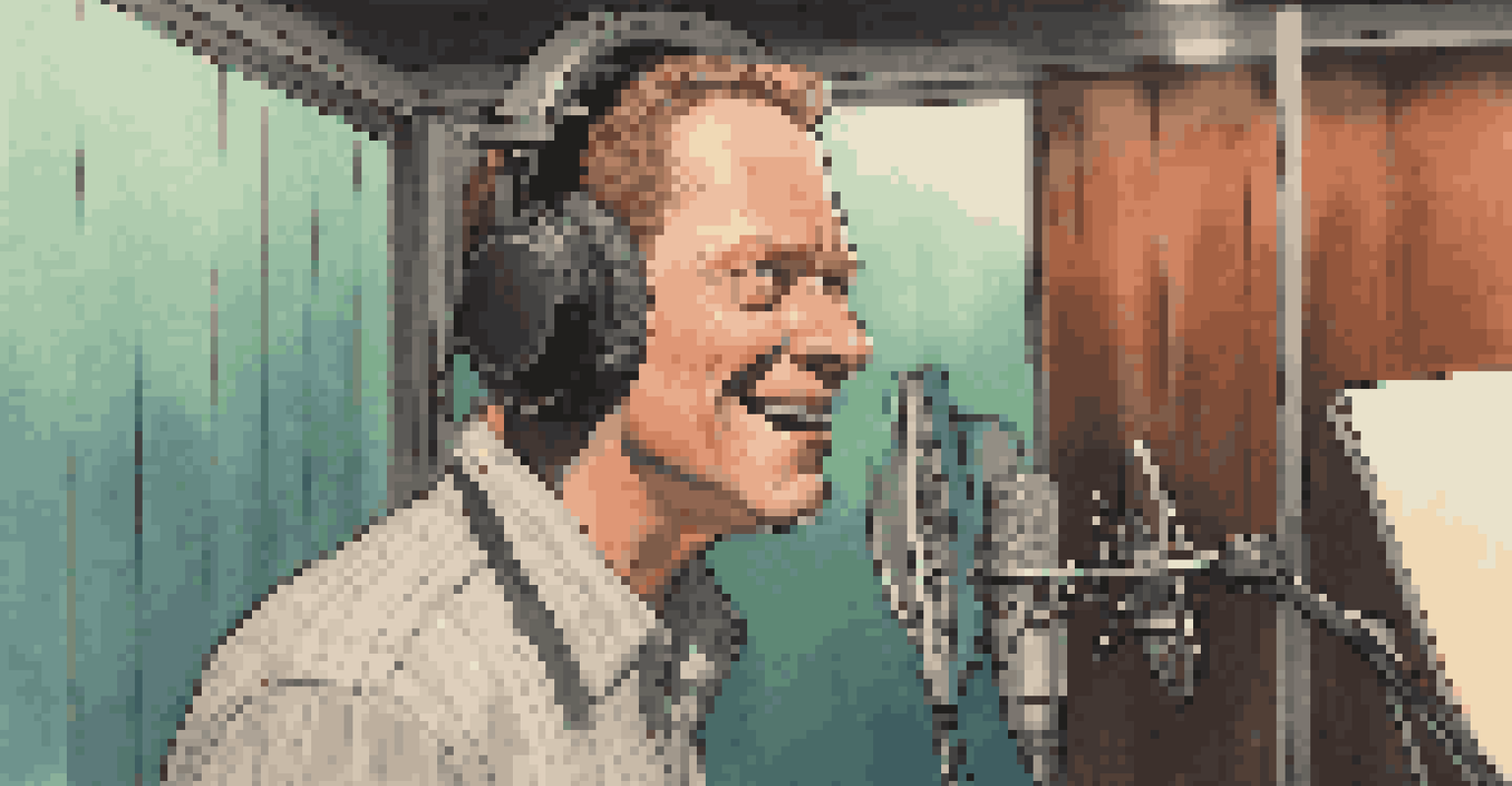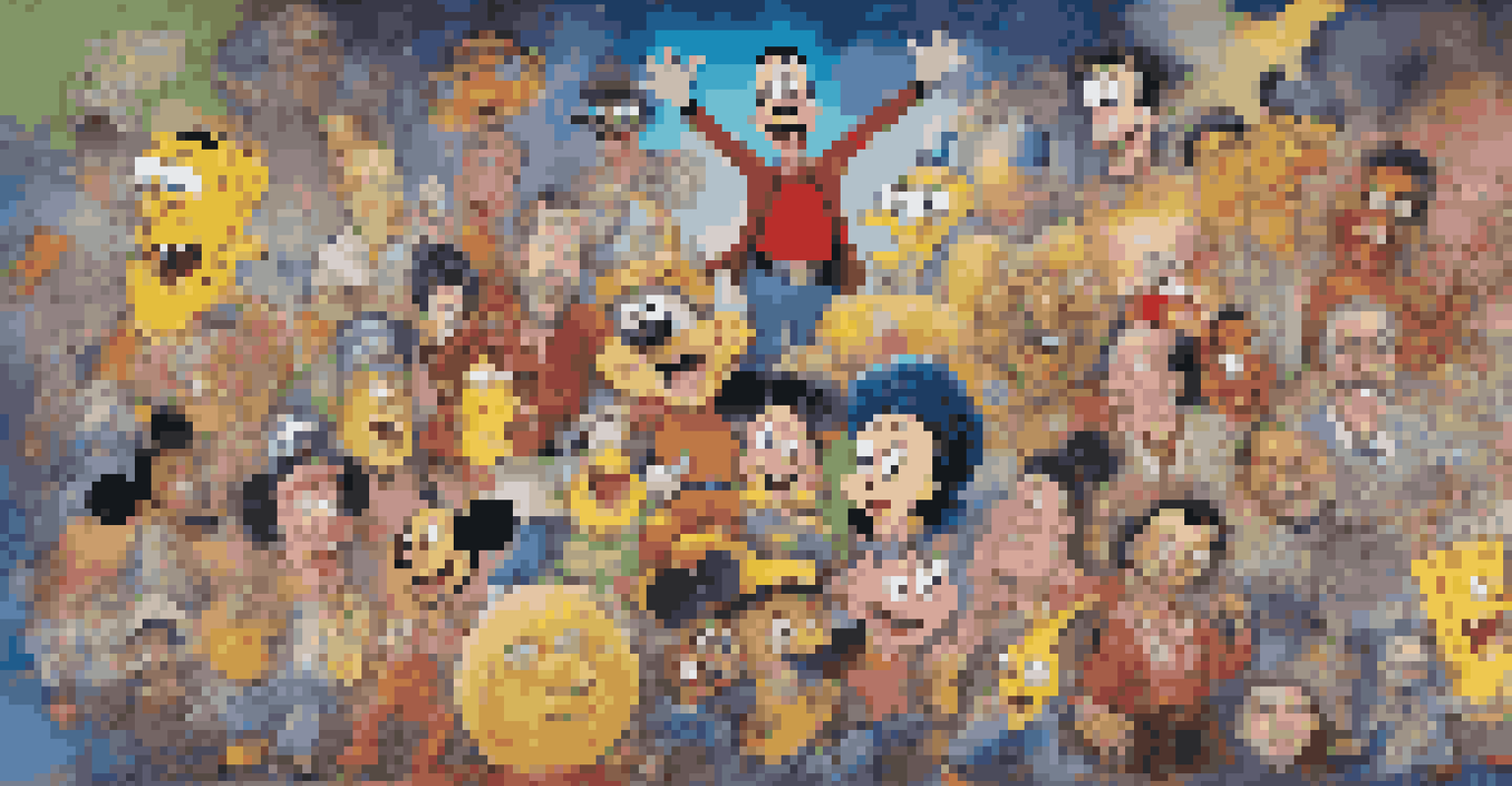The Role of Voice Acting in Animated Series

Understanding the Importance of Voice Acting
Voice acting is the backbone of animated series, giving life to characters that would otherwise remain flat. The tone, emotion, and personality conveyed through voice can drastically change how an audience perceives a character. For example, a villain's sneering tone can evoke fear, while a hero's warm voice can inspire hope.
Voice acting is an essential part of storytelling that transforms written scripts into immersive experiences.
Without skilled voice actors, the visual artistry of animation would struggle to connect with viewers on an emotional level. The right voice can make a character memorable, creating an attachment that viewers cherish long after the credits roll. Think of iconic characters like Homer Simpson or Bugs Bunny—part of their charm lies in their unique vocal performances.
Ultimately, voice acting transforms written scripts into immersive experiences, making it an essential component of animated storytelling. The nuances of delivery can elevate a simple line into a powerful moment, showcasing the art of performance in animation.
The Process of Casting Voice Actors
Casting the right voice actors is crucial for an animated series, as it can significantly influence the show's success. Directors and producers often hold auditions where actors perform specific lines to capture the essence of a character. This process is not just about finding a good voice but also about matching the actor's personality with the character's traits.

For instance, the casting team might look for a warm and friendly voice to play a nurturing character, while a more gravelly voice might suit a gruff mentor. This careful consideration ensures that the chosen actor can bring authenticity to the role. In some cases, the actor's vocal range and ability to convey various emotions can even lead to unexpected character development.
Voice Acting Brings Characters to Life
Skilled voice acting transforms animated characters, making them memorable and emotionally resonant for audiences.
Moreover, the chemistry between voice actors can enhance interactions, making the dialogue feel more natural. When the right voices come together, it creates a dynamic that resonates with audiences, adding depth to the animated series.
The Art of Voice Acting Performance
Voice acting is an art form that requires not just vocal talent but also an understanding of character psychology. Actors must delve into their characters' motivations and emotions to deliver performances that resonate. This involves more than just reading lines; it’s about embodying the character through tone, pacing, and inflection.
The voice is the most powerful tool an actor has, allowing them to convey emotions that words alone cannot.
For example, an actor might change their voice to reflect a character's growth throughout a series, illustrating their journey from uncertainty to confidence. This ability to adapt enhances the storytelling, making it relatable and engaging for viewers. Think of characters like Elsa from 'Frozen'—her evolving voice captures her emotional struggles beautifully.
Additionally, voice actors often employ techniques like improvisation to add spontaneity to their roles. This creativity can lead to unforgettable moments that might not have been scripted, showcasing the versatility and skill involved in voice acting.
The Impact of Voice Direction
Voice direction plays a pivotal role in shaping the final product of an animated series. Directors guide voice actors through the nuances of their performances, ensuring their interpretations align with the overall vision of the series. This collaboration is crucial for maintaining consistency in character portrayal.
For instance, a director may ask an actor to deliver a line with more urgency or vulnerability, tweaking the performance to better fit the scene's emotional tone. This guidance helps actors hone in on the intricacies of their characters, leading to a more cohesive narrative. The relationship between voice actors and directors can significantly influence the final cut of a series.
Casting Shapes Animated Series Success
The casting process is vital as it aligns voice actors' personalities with characters, enhancing authenticity and viewer connection.
Ultimately, effective voice direction enhances the quality of the performance, resulting in a more polished and engaging animated series. The synergy between actors and directors creates a dynamic that brings characters to life in a way that resonates with audiences.
The Evolution of Voice Acting Techniques
Voice acting techniques have evolved significantly over the years, influenced by advancements in technology and changes in audience preferences. In the past, animations often relied on exaggerated vocal styles, but today, there’s a trend toward more realistic and nuanced performances. This shift reflects a growing demand for authenticity in storytelling.
For example, modern animated series like 'BoJack Horseman' showcase a blend of humor and emotional depth, requiring voice actors to master a wide range of expressions. This evolution has led to a richer landscape for voice acting, where actors can explore diverse roles that challenge traditional archetypes.
Moreover, technology has made it easier for voice actors to record from home studios, giving rise to a more global talent pool. This change allows for unique voices and perspectives to be heard, further enriching the animation industry.
The Cultural Impact of Iconic Voice Performances
Iconic voice performances have left an indelible mark on popular culture, influencing everything from merchandise to memes. Characters like Mickey Mouse or SpongeBob SquarePants have transcended their shows, becoming symbols of joy and nostalgia. These characters often evoke strong emotional connections, thanks in large part to the talented voice actors behind them.
Voice actors can become cultural icons themselves, with fans celebrating their unique styles and contributions to beloved series. For example, the late Robin Williams' portrayal of the Genie in 'Aladdin' is often cited as one of the most memorable performances in animation history. His improvisational skills and energetic delivery brought the character to life in ways that resonated across generations.
Future Trends in Voice Acting
As technology evolves, the voice acting field will see AI advancements and a push for greater diversity in representation.
As animated series continue to evolve, the cultural impact of voice acting remains a vital part of the storytelling landscape. These performances shape not just the characters but also the larger narrative within society, reflecting and influencing cultural trends.
The Future of Voice Acting in Animation
As technology advances, the future of voice acting in animation is poised for exciting developments. With the rise of artificial intelligence and voice synthesis, there are discussions about the potential for AI-generated voices to play characters. While this could streamline production, many argue that it lacks the emotional depth that human actors bring to their roles.
Additionally, the industry is likely to see a greater push for diversity and representation in voice acting. As audiences become more aware of the importance of authentic representation, casting directors are increasingly seeking actors who can truly embody the characters' backgrounds and experiences. This shift could lead to richer storytelling and a broader range of voices in animated series.

Ultimately, the essence of voice acting will continue to thrive, as the art of performance is irreplaceable. The human touch in voice acting will always be key to creating relatable characters that resonate with audiences, ensuring its place in the future of animation.